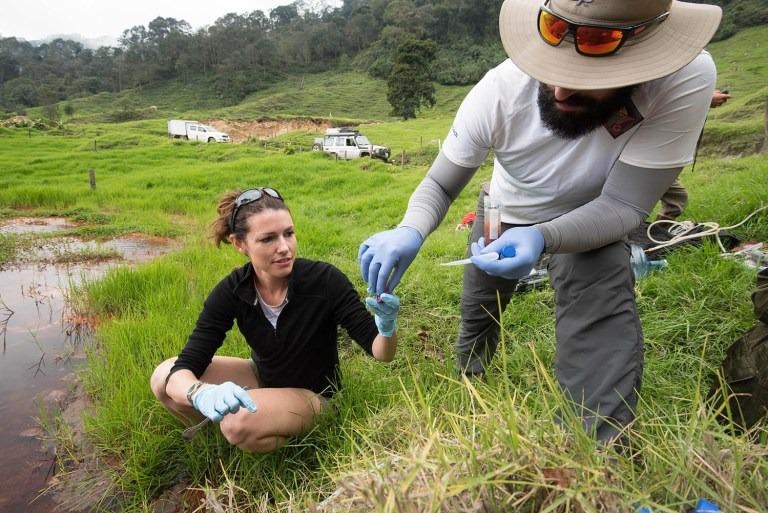Apr 27 2021
Powerful volcanic eruptions and continental collisions are not things generally related to conditions fit for life.

Image Credit: University of Tennessee Knoxville.
But a new study by Associate Professor of Microbiology Karen Lloyd from the University of Tennessee, Knoxville, unraveled a huge microbial ecosystem thriving deep inside the earth and powered by chemicals generated during such tectonic cataclysms.
During collisions of continental and oceanic plates with each other, one plate is pushed down, or subducted, into the mantle, while the other one is pushed up and studded with volcanoes. This is the essential process through which chemical elements are shifted between the surface and interior of the Earth and ultimately recycled back to the surface.
Subduction zones are fascinating environments—they produce volcanic mountains and serve as portals for carbon moving between the interior and exterior of Earth.
Maarten de Moor, Study Co-Author and Associate Professor, National University of Costa Rica
Generally, this process is believed to take place exterior to the reach of life due to the involvement of extremely high temperatures and pressures. Life does not prevail at the extreme conditions where Earth’s mantle combines with the crust to develop into lava, but over the past few decades, researchers have learned that microbes have the potential to live much deeper into Earth’s crust compared to what was considered earlier.
This paves the way for identifying previously unknown biological interactions that take place with deep plate tectonic processes.
An international and interdisciplinary group of researchers has demonstrated that an extensive microbial ecosystem mainly eats the sulfur, carbon, and iron chemicals generated at the time of the subduction of the oceanic plate below Costa Rica.
Through a study financially supported by the Alfred P. Sloan Foundation and the Deep Carbon Observatory, the research group achieved these outcomes by sampling the deep subsurface microbial communities brought to the surface through natural hot springs.
The researchers discovered that this microbial ecosystem sequesters a huge amount of carbon generated during subduction that would otherwise reach the air. The process leads to a projected decrease in the amount of carbon carried to the mantle of up to 22%.
This work shows that carbon may be siphoned off to feed a large ecosystem that exists largely without input from the sun’s energy. This means that biology might affect carbon fluxes in and out of the earth’s mantle, which forces scientists to change how they think about the deep carbon cycle over geologic time scales.
Peter Barry, Study Co-Author and Assistant Scientist, Woods Hole Oceanographic Institution
The researchers discovered that these microbes—known as chemolithoautotrophs—sequester so much carbon due to their special diet, which enables them to make energy without the help of sunlight.
Chemolithoautotrophs are microbes that use chemical energy to build their bodies. So they’re like trees, but instead of using sunlight they use chemicals. These microbes use chemicals from the subduction zone to form the base of an ecosystem that is large and filled with diverse primary and secondary producers. It’s like a vast forest, but underground.
Karen Lloyd, Study Co-Corresponding Author and Associate Professor of Microbiology, University of Tennessee, Knoxville
This new study indicates that the familiar qualitative relationship present between biology and geology may have considerable quantitative repercussions for the knowledge on how carbon has changed over thousands of years.
“We already know of many ways in which biology has influenced the habitability of our planet, leading to the rise in atmospheric oxygen, for example. Now our ongoing work is revealing another exciting way in which life and our planet coevolved,” stated Donato Giovannelli, a professor at the University of Naples Federico II and co-corresponding author of the study.
Journal Reference:
Fullerton, K. M., et al. (2021) Effect of tectonic processes on biosphere–geosphere feedbacks across a convergent margin. Nature Geoscience. doi.org/10.1038/s41561-021-00725-0.